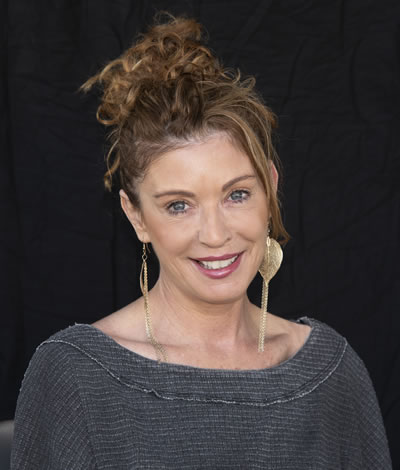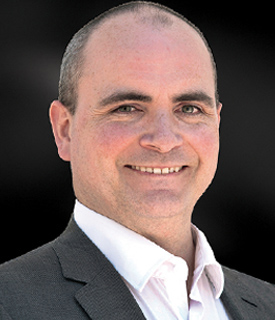
Recovery and Eating Healthy
Recovery and Eating Healthy Recovery means much more than quitting drugs, drinking, or smoking. Recovery means healing mentally, emotionally, and

Recovery and Eating Healthy Recovery means much more than quitting drugs, drinking, or smoking. Recovery means healing mentally, emotionally, and

Many think that self-esteem and self worth are the same thing and use the terms interchangeably. Self-esteem is the confidence


There are holidays year round, but especially in the late fall and winter months, there tends to be extra celebrating

Cravings are not limited to food and pregnant women. Anyone can have cravings and it is possible to have cravings

Behavioral Activation is a technique sometimes used to help treat depression. Just as feelings can influence our behaviors, our behaviors



Actively exercising the art of gratitude may have more benefits than one realizes. Expressing thanks to others, being grateful for
© CROWNVIEW MEDICAL GROUP | ALL RIGHTS RESERVED | PRIVACY POLICY
 Myriame Nicolas, PMHNP-BC
Myriame Nicolas, PMHNP-BC
Board-Certified Psychiatric Mental Health, Nurse Practitioner
Myriame Nicolas is a dedicated and experienced Psychiatric Mental Health Nurse Practitioner licensed in California, with over 18 years of experience as an inpatient psychiatric registered nurse. Raised in Park Slope, Brooklyn, New York, Myriame completed her undergraduate studies in Psychology at Nyack College. She later earned her Bachelor of Science in Nursing at New York University, where she received specialized training in psychiatry at Bellevue Hospital.
Throughout her extensive career, Myriame has gained invaluable experience working with diverse populations across multiple states. Her expertise spans psychiatric emergency care, mood disorder units, eating disorders units, substance use treatment, and both geriatric and pediatric mental health. While managing her responsibilities as a traveling nurse, she pursued and completed her Master’s degree as a Psychiatric Nurse Practitioner at Walden University.
Myriame’s practice is distinguished by her profound compassion and empathy for individuals navigating vulnerable phases of their lives. She is deeply committed to ensuring patient satisfaction and improving health outcomes. Fluent in French-Creole and knowledgeable in American Sign Language, Myriame effectively bridges communication gaps to provide inclusive and patient-centered care.
 Christina Lam, PMHNP-BC
Christina Lam, PMHNP-BC
Psychiatric Mental Health Nurse Practitioner
Christina Lam is dedicated Nurse Practitioner with years of nursing experience. Her background is in psychiatry, emergency, and critical care. She is a skilled communicator who is professional, personal, and very adaptable. She is self-motivated with energy, initiative, and focus. She has a keen insight into the needs and views of others. She is able to listen and identify issues or problem areas and form innovative solutions.
Christina graduated from University of San Diego in 2010, obtaining her Family Nurse Practitioner’s certification in 2011, and most recently became certified in 2019 as a Psychiatric-Mental Health Nurse Practitioner. She specializes in Children, Adult, Family and Geriatric Psychiatry.
 Charlie Perez, PMHNP-BC
Charlie Perez, PMHNP-BC
Psychiatric Mental Health Nurse Practitioner
Charlie Perez is a Board Certified Psychiatric Mental Health Nurse Practitioner. She has been studying treatment modalities in Sports Medicine, Psychology, and Nursing for the last 19 years. She has practiced medicine in Flight Nursing, Critical Care, Emergency, Surgical, Cardiovascular and Trauma for the last 11 years finding her ultimate passion in Psychiatry. She has been working as a Chief Flight Nurse, an Administrative Liaison at Sharp Mesa Vista inpatient, and a Hypnotherapist for the last three years before coming to Crownview.
Charlie earned her Bachelors of Science degree in Sports Medicine and Psychology at University of the Pacific, then earned her Bachelors of Science degree in nursing at University of Texas at Arlington, ultimately earning her Masters in Nursing and Doctorate in Nursing at Frontier Nursing University. She has worked throughout San Diego’s healthcare system such as Scripps, Sharp, Kaiser, UCSD, and Paradise Valley Hospital.
Charlie finds truth in the words of the great psychiatrist Milton Erikson, “Every person’s mind is as unique as their fingerprints, as there is no finding of any duplicate fingerprint”. We are wired specifically in a way that our environment and our own mind intended to help us as an individual to survive. It then makes sense why the same sentences can be understood differently by two people. That’s why therapy and practice in any modality should be to assist and support the individual and not the individual to the modality.
 Kimberly Umansky, FNP-C
Kimberly Umansky, FNP-C
Family Nurse Practitioner
Kimberly Umansky is a Family Nurse Practitioner, board certified by the American Academy of Nurse Practitioners certification board and is qualified to practice in both primary care and psychiatry and to diagnose, treat, and prescribe medication for children, adolescents, and adults. Some of her practice specialties include (but are not limited to) ADHD, Depression, Anxiety, Panic Attacks, and Insomnia. Kim’s style of practice includes traditional treatment (prescribing up-to-date psychiatric medications) combined with natural treatments including nutrition, lifestyle modification, exercise, and stress management. She believes the mind-body connection is the core foundation to any treatment, health, and wellness.
Kim began her nursing career in 1995, and over the course of twenty seven years of medical practice, she has had the privilege to work in a variety of different practice areas, including gynecology, dermatology, internal medicine, pediatrics, post-anesthesia care, and hospital based nursing before earning her Masters in Nursing with a focus as a Family Nurse Practitioner in 2017. Kim received her Associate of Science and Associate Degree of Nursing from Ohlone College. She went on to receive her Bachelor’s degree from University of Phoenix and then her Master’s Degree with Distinction from Chamberlain College of Nursing with a focus as a Family Nurse Practitioner. Kim currently works in both internal medicine and psychiatry. It was during her time working in internal medicine that she realized that many of her patients were struggling with their mental health. Realizing that psychiatry was her passion, she wanted to help others by providing tools to manage their mental health concerns. Kim has always enjoyed helping people and finds her work very rewarding.
 Joanne Talbot Miller, M.A., LMFT
Joanne Talbot Miller, M.A., LMFT
Licensed Marriage & Family Therapist
Joanne Talbot Miller is a licensed marriage and family therapist with a background in crisis intervention. Joanne began her career as an MFT working in an emergency shelter program for survivors of domestic violence and human trafficking with substance abuse and severe mental health issues. Joanne has provided individual and group therapy within residential and outpatient transitional housing programs. She has facilitated groups on domestic violence education, safety planning, anger management, communication, substance abuse, prevention, and independent living. She has worked on a crisis hotline for students providing suicide assessments, suicide prevention and support to transitional age youth. Joanne provided crisis counseling and helped students connect with services such as drug and alcohol treatment, emergency housing, and mental health treatment.
Joanne’s career has a strong behavioral background working with children and adolescents with developmental, emotional, and behavior problems. Working with the whole family Joanne taught strategies to improve behavior, family functioning, and alleviate daily stress in the home.
Joanne brings an integrative approach to therapy that brings together the affective, behavioral, cognitive, and physiological levels of functioning. This approach helps individuals gain insight into themselves, and reduces unhealthy, dysfunctional defense mechanisms and patterns of behavior.
Joanne graduated from the University of Luton in England and continued her education earning her Master’s Degree in Marriage, Family, and Child Therapy from the University of Phoenix.
 J. Heather Fitzpatrick, LCSW
J. Heather Fitzpatrick, LCSW
Therapist
As a naval spouse and the mother of an autistic child, J. Heather Fitzpatrick, LCSW knows how difficult it can be to cope with adversity. As an experienced therapist, Heather is well equipped to help guide you towards a happy and fulfilling life.
Heather earned her BA in Psychology from prestigious Clark University in Worcester, MA and went on to obtain a Masters in Clinical Social Work from well known Smith College in Northampton, MA. She has worked in the mental health field since 2001 and was last employed by Fleet and Family Services in Coronado, CA before entering private practice with Crownview Medical Center.
Heather serves children, adolescents, adults, couples, and families using a variety of treatment modalities to help clients address issues such as depression, anxiety, trauma, PTSD, substance abuse, relational problems, parenting concerns, and life adjustments to name a few.
Current Licensing Information: LCS No. 28929, Board of Behavioral Sciences, CA
 Agata Nowakowska
Agata Nowakowska
Marriage and Family Therapist
gata is a Licensed Marriage and Family Therapist who provides guidance to individuals and families to feel more empowered in managing life’s obstacles, rebuilding important relationships and reaching their highest potential.
She received her Master’s Degree in Counseling from San Diego State University. Throughout her career she has worked in a variety of settings helping culturally diverse individuals, children and families, struggling with emotional, social, developmental and academic issues.
Her primary approach to therapy is collaborative, holistic and strength based, offering a compassionate and healing space where clients feel safe to explore their unique thoughts, beliefs and feelings. She has over 10 years of experience incorporating into her practice CBT, Narrative and Solution Focused Therapy, as well as Expressive Arts and Play Therapy.
Agata treats the following issues:
[divider style=”empty” margin_top=”10px” margin_bottom=”0px”]
Agata specializes in, and enjoy working with, children and adolescents using Expressive Arts and Play Therapy techniques to which children respond very well and often prefer over traditional therapy. She is a Certified Parenting Coach of Redirecting Children’s Behavior and Joy of Parenting Program. From her personal experience being a mother to a teenage boy and stepmother of two children, she can relate and likes to help parents and step-families struggling with parenting issues.
 Brianna Meacham
Brianna Meacham
Marriage and Family Therapist
Bachelor of Arts, Psychology, Minor, Business Administration
University of Oregon, Eugene, OR, June 2002
Master’s, Marriage and Family Therapy
Alliant International University, San Diego, CA, June 2005
Brianna is a Marriage and Family Therapist, licensed with the Board of Behavioral Sciences, license #48685.
Following graduate school she gathered 3000 hours of experience to sit for the licensing exams and became licensed by the Board of Behavioral Sciences in 2010. In that time she worked as a Service Coordinator at the San Diego Regional Center and as a Program Therapist at the San Diego Center for Children. Additionally, she kept a private practice at First Avenue Counseling Centre. Currently she works as a clinician for Paradise Valley Hospital and see clients at Crown View Medical Group. Brianna is also a member of the American Association for Marriage and Family Therapy. She has experience with the following:
[divider style=”empty” margin_top=”10px” margin_bottom=”0px”]
Brianna utilizes many different theoretical models to help clients reach their goals including the following:
 Maha Moses, PhD
Maha Moses, PhD
Psychologist
Dr. Moses earned her Master’s Degree in Professional Psychology from the Universitė de Nice Sophia Antipolis, Nice, France. She obtained her doctorate degree in Clinical Psychology from Alliant International University California School of Professional Psychology in San Diego, California.
Dr. Moses has over 20 years-experience treating a wide array of psychiatric disorders with adults and adolescents. She has worked with clients who suffer from acute and chronic disorders in a number of settings including psychiatric hospitals, residential treatment centers and community agencies. For the past 10 years, Dr. Moses has provided therapy at a drug and alcohol treatment center, with in-patient and out-patient services, focusing on her clients’ substance abuse and other co-occurring psychiatric disorders such as anxiety spectrum disorders, mood disorders-including depression and PTSD.
In her private practice, Dr. Moses also provides psychological evaluation, pre-surgical psychological clearance, and psychological services to clients within pain management. She has extensive experience in psychological assessments with children and adults in a variety of settings. Her life experiences and years of practice have significantly enhanced her approach to therapy and she is passionate about her practice.
 Rebecca McKnight, PsyD
Rebecca McKnight, PsyD
Psychologist
Dr. McKnight earned her Bachelor’s Degree in Psychology at UCLA and received her Doctorate of Psychology in 2009 from Alliant International University California School of Professional Psychology in San Diego, California. She has been licensed since 2010 and has over 10 years of experience in the mental health field at various locations and with different populations.
Some of her work and training experiences include individual therapy, couples therapy, inpatient and partial hospitalization treatment, correctional (prison) psychology, PTSD study for the VA and long-term therapy and psychological evaluations with adolescents and adults.
Most recently she worked with active duty military personnel at the Mental Health Clinic at the Naval Hospital Camp Pendleton from 2012-2014. She has maintained her own private practice since 2009 because she is passionate about therapy and psychological testing.
Dr. McKnight treats adolescents and adults and provides individual and couples therapy as well as psychological evaluations. In her practice, Dr. McKnight focuses on a whole-person approach and incorporates CBT and mindfulness into her practice. Currently, she has dedicated her career to full-time private practice with clients at Crownview Medical Group and Crownview Co-Occurring Institute.
 Tiffany Holm N.P.
Tiffany Holm N.P.
Nurse Practitioner
Tiffany Holm earned her Family Nurse Practitioner degree from Yale University and has been in practice over 10 years. She believes the happiness in our lives depends on the quality of our thoughts and mental wellness. One of her greatest joys is listening intently to her patients, then together, discussing individualized lifestyle modifications and evidence-based medication options to reach goals and ultimately, increase the happiness of those entrusted under her care.
 Dede Echitey, PMHNP-BC
Dede Echitey, PMHNP-BC
Nurse Practitioner
Dede Echitey is a Family Nurse Practitioner, board-certified by the American Academy Nurse Credentialing Center, and licensed by the states of Virginia and California to provide family-centered healthcare to patients of all ages. Her scope of practice encompasses health promotion, disease prevention, diagnosis and management of common and complex health care problems beginning in childhood and continuing throughout the aging process.
Dede earned an Associate of Science degree in Nursing from Del Mar Community College. She continued her education, earning a Bachelor of Science degree in Nursing from the Kaiser University. She then completed a Master of Science degree in Nursing, with a focus in Family medicine, from Walden University. Most recently in 2020, Dede became certified as a Psychiatric-Mental Health Nurse Practitioner.
Dede began her career in nursing in 2010 and has been a family nurse practitioner since 2015. Her previous experience includes work in Inpatient Psychiatric Hospital, rural health and urgent clinics as well at the US Immigration Detention Center. She is qualified to diagnose and treat a wide array of conditions across the entire lifespan.
 Apneet Mann, FNP-C
Apneet Mann, FNP-C
Nurse Practitioner
Bio coming soon.
 Rachael Hueftle, NP
Rachael Hueftle, NP
Nurse Practitioner
Bio: Rachael Hueftle is a board-certified nurse practitioner with over 10 years of experience. She graduated from University of Nevada, Reno, in 2008 with her Master’s Degree. Having a background in Critical Care, Orthopedics, Pain Management and Psychiatry she is a wealth of information. She is very passionate about her profession and truly cares about the well-being of her patients. She will listen to your concerns, discuss treatment options and communicate with you all of her thoughts and recommendations for your own self-improvement and awareness. She is here to support and guide you. She will welcome you with a smile and treat you with respect, compassion and empathy.
 Kelvin Poon, MSN, PMHNP-BC
Kelvin Poon, MSN, PMHNP-BC
Psychiatric Mental Health Nurse Practitioner
Kelvin Poon is a Psychiatric Mental Health Nurse Practitioner, board-certified by American Nurses Credentialing Center and licensed in California. He is a passionate healthcare professional with 7 years of inpatient psychiatric nursing experience and is committed to providing excellent, compassionate, holistic, culturally competent and patient-and-family centered care.
Kelvin earned his Bachelor of Science degree in Nursing from California State University San Marcos in 2014. He worked as a Registered Nurses for 2 years at Aurora Behavioral Healthcare San Diego Hospital and 5 years at Scripps Mercy Hospital’s Behavioral Health Unit before earning his Master of Science degree in Nursing from California State University San Marcos with focus as a Psychiatric Mental Health Nurse Practitioner in 2021.
Kelvin was born and raised in Hong Kong and speaks English and Cantonese. Growing up in Hong Kong, he directly observed the stigmatization of mental illness and the effects of this in his culture, which has motivated his career goal of becoming a Psychiatric Mental Health Nurse Practitioner. His philosophy is to work hard to reduce the stigma associated with mental illness by promoting awareness and education within the community. Dedicated to being a strong advocate for his clients, Kelvin brings a strong sense of compassion to his practice.
Dr. Cox is a board certified psychiatrist who received her education from the University of Kansas School of Medicine where she received her medical degree in 1986. She completed her residency in Psychiatry also at the University of Kansas School of Medicine where she was Chief Resident. Prior to medical school Dr. Cox taught science to junior and senior high school students.
Her medical career has included serving in a rural setting, in community mental health, in a regional hospital based private practice and elderly residents of nursing homes.
Dr. Cox specializes in the treatment of adult and geriatric psychiatry as well as having several years of experience working with active duty and veteran soldiers and their dependents.
 Dr. Mark Melden
Dr. Mark Melden
Psychiatrist, CEO/President of Crownview Co-Occurring Institute
Dr. Melden earned his Doctorate in Osteopathic Medicine at Philadelphia College Osteopathic Medicine and went to USC Presbyterian Hospital for his residency in Family Medicine. He then completed his Psychiatric residency at the University of California, Irvine and went to UCSD Geropsychiatry pursuing a fellowship. Dr. Melden has over 14 years of experience as a clinician specializing in treating child and adolescent, adult and geriatric clients. He has devoted his life to psychiatry in a variety of different treatment settings including in- patient and out-patient environments. He specializes in the psychiatric evaluation, complementary therapy approaches, and medical management of individuals suffering from mental illness. Currently, he maintains a private practice with Crownview Medical Group in Coronado and Carlsbad, California where he is CEO/President.
Dr. Melden is a dedicated medical professional who provides a spectrum of services from general care to specialized state-of-the-art treatment. He is committed to providing specialized and individualized services with a comprehensive treatment plan for each client he treats. Dr. Melden believes the optimal way to provide excellent care is through continued attention and maintenance.
LEAVING 2/15/24. Click here for more information.
 Tim Sartori, MSN, FNP-C
Tim Sartori, MSN, FNP-C
Nurse Practitioner
Tim Sartori is a Family Nurse Practitioner, board-certified by the American Academy of Nurse Practitioners and licensed in California. His philosophy of care includes providing up-to-date evidence-based treatments with a patient-centered focus allowing him to collaborate with patients and their families to create personalized treatment plans.
Tim earned his first degree in Business Administration from University of the Pacific in 2008 before receiving his Bachelor of Science degree in Nursing from Azusa Pacific University in 2017. He worked as a Registered Nurse for 3 years at Sharp Memorial Hospital before earning his Master of Science in Nursing from Azusa Pacific University with focus as a Family Nurse Practitioner in 2020.
Tim’s experiences working in a variety of different fields from business to healthcare as an EMT and a registered nurse gives him a unique perspective on mental health issues. His goal is to provide patients with personalized education and tools to navigate their mental health concerns and enrich their own lives.
LEAVING 2/15/24. Click here for more information.
 Tim Sartori, MSN, FNP-C
Tim Sartori, MSN, FNP-C
Nurse Practitioner
Tim Sartori is a Family Nurse Practitioner, board-certified by the American Academy of Nurse Practitioners and licensed in California. His philosophy of care includes providing up-to-date evidence-based treatments with a patient-centered focus allowing him to collaborate with patients and their families to create personalized treatment plans.
Tim earned his first degree in Business Administration from University of the Pacific in 2008 before receiving his Bachelor of Science degree in Nursing from Azusa Pacific University in 2017. He worked as a Registered Nurse for 3 years at Sharp Memorial Hospital before earning his Master of Science in Nursing from Azusa Pacific University with focus as a Family Nurse Practitioner in 2020.
Tim’s experiences working in a variety of different fields from business to healthcare as an EMT and a registered nurse gives him a unique perspective on mental health issues. His goal is to provide patients with personalized education and tools to navigate their mental health concerns and enrich their own lives.
 Nancy Stepanek, MSN, PMHNP-BC
Nancy Stepanek, MSN, PMHNP-BC
Nurse Practitioner
Nancy Stepanek is board certified as a nurse practitioner in both mental health for all ages and adult health. She obtained her Bachelor of Science in Nursing at St. Luke’s College in Kansas City, Missouri. She earned her MSN as an adult nurse practitioner with a palliative care specialty from Vanderbilt University in Nashville, Tennessee in 2008. She was working in Internal Medicine when she realized that many of her patients were struggling with their mental health. Therefore, she went back to school for a Post Master’s Certificate as a Psychiatric Mental Health Nurse Practitioner across the Lifespan at the University of Missouri-Kansas City in 2018.
Nancy started hospice work in nursing school as a home health aide, over the years she has been a hospice nurse, hospice team leader and hospice nurse practitioner. Nancy has worked in general medicine, oncology, geriatrics, and internal medicine over the years. She has always held on to the principles she developed in hospice – patient care, compassion, teamwork, and a patient’s right to fully understand their care and have input into deciding their care.
As a recent San Diego resident, Nancy and her husband enjoy walking around all the beautiful places in Southern California and trying all the wonderful restaurants.
 Nathan Kuemmerle, MD
Nathan Kuemmerle, MD
Psychiatrist
Dr. Nathan Kuemmerle graduated from UC Irvine-College of Medicine with General Adult Psychiatry Residency training in Los Angeles. He has trained extensively in UCLA, Cedar-Sinai, VA and L.A. County systems. As an outpatient psychiatrist, Dr. Kuemmerle has worked extensively in California, including Downtown Los Angeles, Northern California, South Central, West L.A., and now Carlsbad.
Dr. Kuemmerle has been in actual private practice for five years and has continued to stay updated in the latest and best medical treatments for all psychiatric diagnoses. Dr. Kuemmerle was born in San Diego, lived locally, and attended Torrey Pines High School in Del Mar, California.